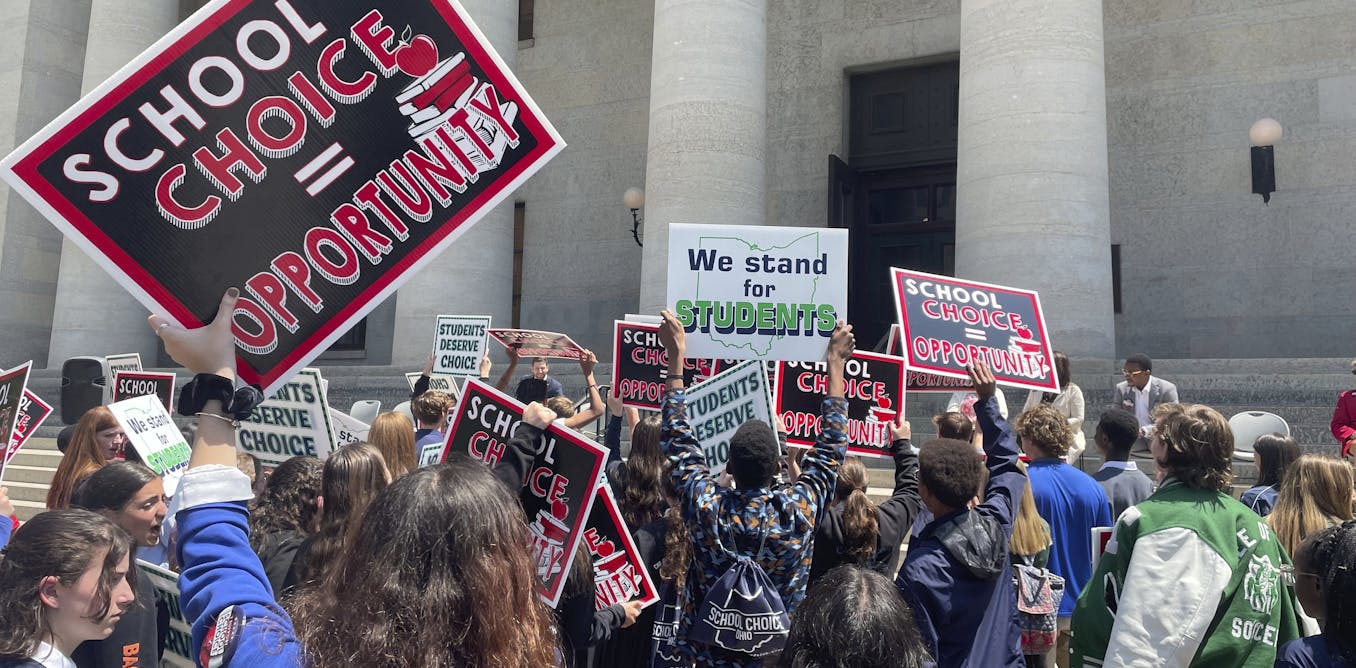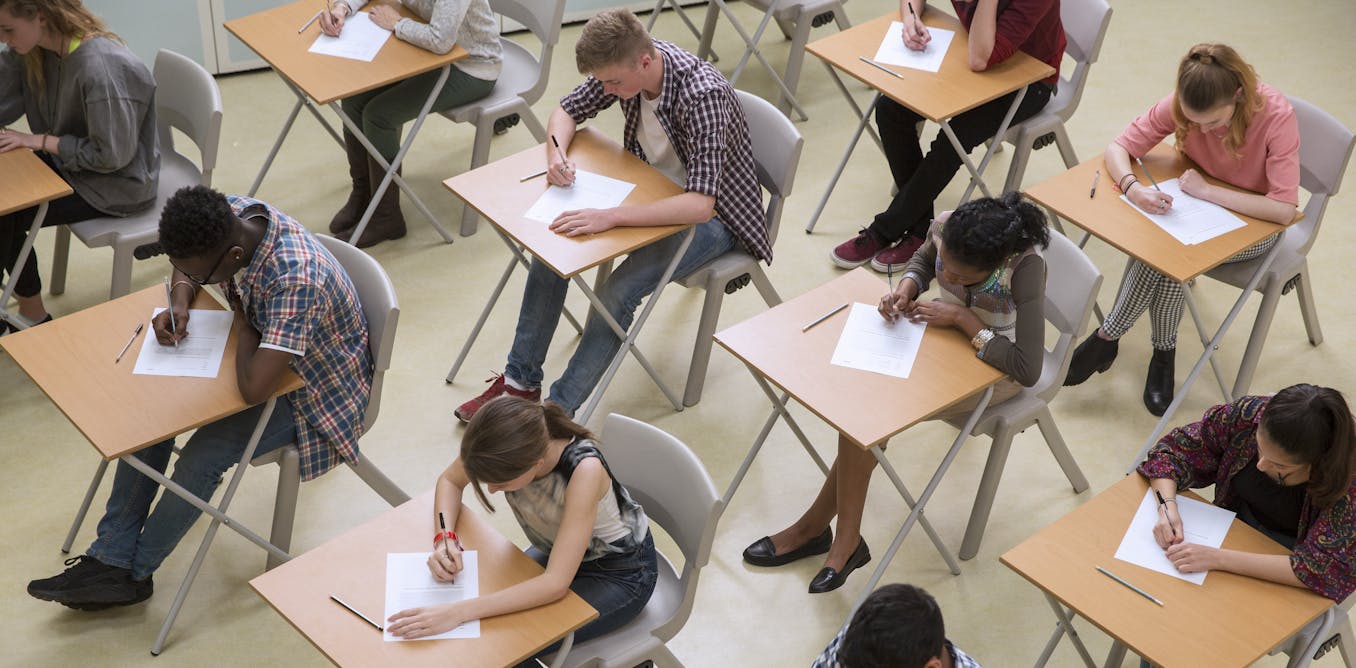The school choice movement received a major boost on Jan. 29, 2025, when President Donald Trump issued an executive order supporting families who want to use public money to send their children to private schools.
The far-reaching order aims to redirect federal funds to voucher-type programs. Vouchers typically afford parents the freedom to select nonpublic schools, including faith-based ones, using all or a portion of the public funds set aside to educate their children.
But research shows that as a consequence, this typically drains funding from already cash-strapped public schools.
We are professors who focus on education law, with special interests in educational equity and school choice programs. While proponents of school choice claim it leads to academic gains, we don’t see much evidence to support this view – but we do see the negative impact they sometimes have on public schools.
The rise of school choice
The vast majority of children in the U.S. attend traditional public schools. Their share, however, has steadily declined from 87% in 2011 to about 83% in 2021, at least in part due to the growth of school choice programs such as vouchers.
Modern voucher programs expanded significantly during the late 1980s and early 1990s as states, cities and local school boards experimented with ways to allow parents to use public funds to send their kids to nonpublic schools, especially ones that are religiously affiliated.
While some programs were struck down for violating the separation of church and state, others were upheld. Vouchers received a big shot in the arm in 2002, when the Supreme Court ruled in Zelman v. Simmons-Harris that the First Amendment’s Establishment Clause permitted states to include faith-based schools in their voucher programs in Cleveland.
Following Zelman, vouchers became a more realistic political option. Even so, access to school choice programs varied greatly by state and was not as dramatic as supporters may have wished. Because the Constitution is silent on education, states largely control school voucher programs.
Currently, 13 states and Washington, D.C., offer one or several school choice programs targeting different types of students. Total U.S. enrollment in such programs surpassed 1 million for the first time in 2024, double what it was in 2020, according to EdChoice, which advocates for school-choice policies.
Voters, however, have taken a dim view of voucher programs. By one count, they’ve turned down referendums on vouchers 17 times, according to the National Coalition for Public Education, a group that opposes the policy.
Most recently, three states rejected school choice programs in the November 2024 elections. Kentucky voters overwhelmingly rejected a proposal to enshrine school choice into commonwealth law, while Nebraska voters chose to repeal its voucher program. Colorado also rejected a “right” to school choice, but more narrowly.
AP Photo/George Walker IV
Trump’s order
At its heart, Trump’s executive order would offer discretionary grants and issue guidance to states over using federal funds within this K-12 scholarship program. It also directs the Department of Interior and Department of Defense to make vouchers available to Native American and military families.
In addition, the order directs the Department of Education to provide guidance on how states can better support school choice – though it’s unclear exactly what that will mean. It’s a task that will be left for Linda McMahon, Trump’s nominee for secretary of Education, once she is confirmed.
Trump promoted school choice in his first term as well but failed to win enough congressional support to include it in the federal budget.
Research suggests few academic gains from vouchers
The push to give parents more choice over where to send their children is based on the assumption that doing so will provide them with a better education.
In the order, Trump specifically cites disappointing data from the National Assessment of Educational Progress showing that 70% of eighth graders are below proficient in reading, while 72% are below proficient in mathematics.
Voucher advocates point to research that school choice boosts test scores and improves educational attainment.
But other data don’t always back up the notion that school choice policies meaningfully improve student outcomes. A 2023 review of the past decade of research on the topic by the Brookings Institution found that the introduction of a voucherlike program actually led to lower academic achievement – similar to the impact of the COVID-19 pandemic.
A 2017 review by a Stanford economist Martin Carnoy published by the Economic Policy Institute similarly found little evidence vouchers improve school outcomes. While there were some modest gains in graduation rates, they were outweighed by the risks to funding public school systems.
Indeed, vouchers have been shown to reduce funding to public schools, especially in rural areas, and hurt public education in other ways, such as by making it harder for schools to afford qualified teachers.
Critics of voucher programs also fear that nonpublic schools may discriminate
against some students, such as those who are members of the LGBTQ+ community. There are some reports of this already happening in Wisconsin. Unlike legislation governing traditional public schools, state laws regulating voucher programs often do not include comprehensive anti-discrimination provisions.
School reform
Criticisms of voucher programs aside, many parents who support them do so based on the hope that their children will have more affordable, high-quality educational options. This was especially true in Zelman, in which the Supreme Court upheld the rights of parents to remove their kids from Cleveland’s struggling public schools.
There is little doubt in our minds that in some cases school choice affords some parents in low-performing districts additional options for their children’s education.
But in general, the evidence shows that is the exception to vouchers, not the rule. Evidence also suggests most children – whether they’re using vouchers to attend nonpublic schools or remain in the public school system – may not always benefit from school choice programs. And when it takes money out of underfunded public school systems, school choice can make things worse for a lot more children than it benefits.
While the poor reading and math scores cited in Trump’s executive order suggest that change is needed to help keep America’s school and students competitive, this order may not achieve that goal.




